Balcony over Jerusalem: man in the middle in Israel
How my report about four Palestinian boys tried for throwing rocks in the West Bank led to crude intimidation.
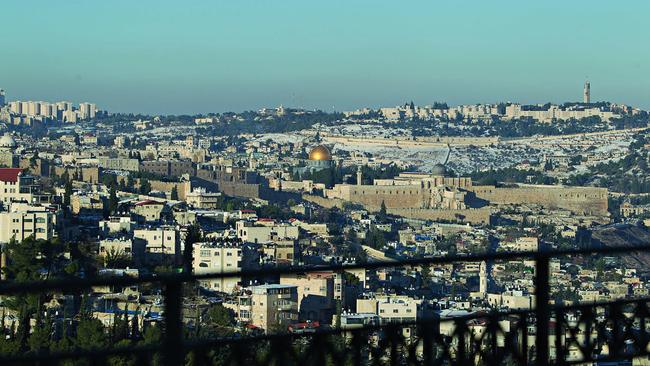
We had the best balcony in Jerusalem. From it we could see the best and the worst of this ancient city – the extraordinary past and the beguiling present. The good and the bad, the hope and the despair. And it was from this balcony that I would go forth around the Middle East, flying to wherever yet another dictator was slaughtering his people. For me, my wife Sylvie and our son Jack – eight when we first arrived – so much of family life during our six-year adventure in the Middle East happened on this balcony.
The balcony became not just our base, but also our favourite place. From it, we looked across an extraordinary landscape: rows of gnarled olive trees; the Old City of Jerusalem with its golden Dome of the Rock, the sombre-looking Al-Aqsa Mosque and Western Wall; the grandeur of Mount Zion; the Mount of Olives and the Judean desert. We also had a view of modern Jerusalem, with its high-tech entrepreneurs, who have made Israel the largest foreign contributor after China to New York’s Nasdaq stock exchange.
In front of our apartment, as well as the Western Wall, we could see the other famous “wall” – the concrete snake that separates Israel from the occupied West Bank. As with everything there, people can’t even agree on its name: the Israelis call it a “security fence”, the Palestinians an “apartheid wall”. Israel’s supporters in Australia prefer not to call it a wall but a fence. Every day we’d see Israeli Army jeeps driving along the “wall”, checking on a new Israeli settlement that was being built on the outskirts of a Palestinian village.
Our balcony became our private time machine. We could fast-forward from the biblical past to the troubled present. We would see tear gas being fired at Palestinians and rocks being thrown at Israeli soldiers.
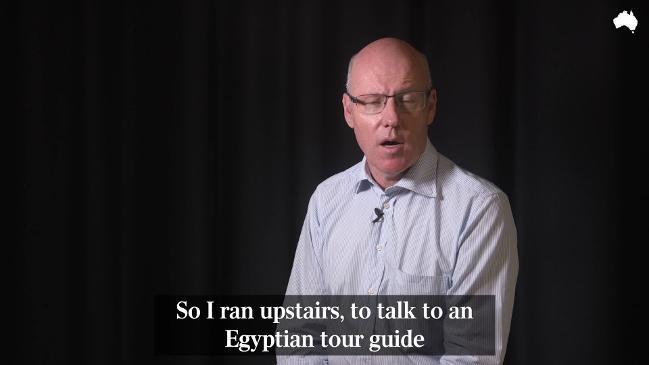
On Fridays – the Muslim holy day and start of the Jewish Shabbat – I developed a routine. As soon as I woke I’d go onto the balcony where I could see this conflict taking place right in front of me. If there were merely police helicopters circling the hotspots, I knew it was a run-of-the-mill confrontation. When Israeli police prevented access by males aged five to 55 to the Al-Aqsa Mosque on the Temple Mount, I knew the violence would be much worse. If things were really bad, an army blimp would fly above. On those days, Sylvie and I would jump into our car and head towards the trouble spot. Sylvie would take photographs and videos for The Australian, as well as for other media outlets.
The Friday clashes were mainly unremarkable. Locals dismissed them as “a bit of Tom and Jerry”. Usually at about two o’clock the Israeli soldiers and the Palestinians would go back to their lives until the following week. We were watching the world’s slowest war.
Author of 'Balcony Over Jerusalem' @TheLyonsDen speaks about life in the Middle East and the challenges he faced as a journalist. #Ticky pic.twitter.com/fe1Wm41FhC
— Sky News Business (@SkyBusiness) July 28, 2017
In front of our balcony was the “peace park”. This was part of the unwritten code of Jerusalem: Israelis would place their picnic baskets on the higher parts and the Palestinians on the lower parts. On Friday evenings, when a siren announced the weekly Shabbat, Israelis would walk to their Shabbat dinners. This was the cue for Palestinians to appear, carrying plates of food. For 24 hours, the Palestinians would move to the higher parts.
You could set your clock by this changing of the guard. Jack and I would hear everyone in the park speaking Hebrew at five o’clock and everyone speaking Arabic at six o’clock. In one extraordinary hour, one religion, language and culture would be replaced by another. Every weekend I wondered: how was it, amid all the wreckage of the Middle East, that these rituals endured?
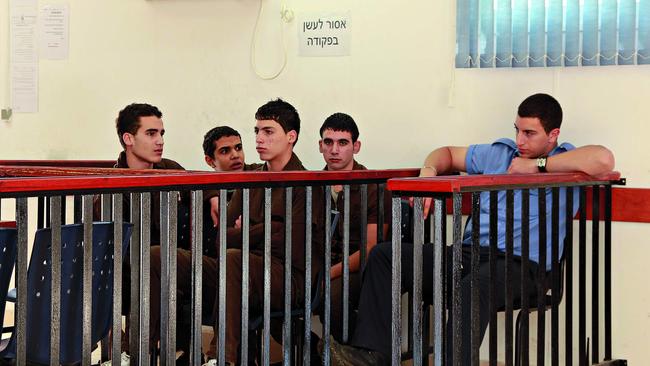
As a family, we embraced local life with gusto. We enrolled Jack in an Israeli judo school and summer camp, and he befriended some Palestinian students at the French school he attended, while I began to study Hebrew and learnt to read and write it to a basic level. Gradually we made friends, mainly through Jack’s school, and in our building and neighbourhood.
About six o’clock one morning, the mother of one of the Palestinian boys from Jack’s school phoned. “We need your help,’’ she said. “As a foreigner you will have more influence than us.” She said the police had come to their house in Jerusalem and taken away their 16-year-old son. He was now being interrogated, without a parent or lawyer, by Shin Bet, Israel’s internal security agency.
Someone had gone into the family’s garden and cut down their olive trees and written “Price Tag” in Hebrew. “Price Tag” was a policy of violence used by some Israeli settlers in the West Bank to protest against government decisions they didn’t like. They would write these words after they burnt down mosques or cut down olive trees.
“They say my son cut down the olive trees,” the mother said. To me this was completely implausible – the notion that he would cut down his own family’s olive trees, then write “Price Tag”. For 16 hours different interrogators tried different approaches – sometimes threats, sometimes sympathy – to get him to confess. They eventually let him go, but such interrogations of children occur every day in the West Bank.
When it comes to detaining Palestinian children for questioning, in most cases soldiers would force their way into a house at two or three in the morning. Children as young as 12 were routinely taken by soldiers from their beds to unknown locations, denied access to a parent or lawyer and sometimes kept in solitary confinement.
I researched the West Bank military court for more than a year and finally the Israel Defense Forces (IDF) gave Sylvie and me rare access. It was a sunny morning in November 2010 when we picked up army spokesman Captain Arye Shalicar and drove to the military court at Ofer.
Twice a week they had children’s days when children as young as 12 faced the army judges. I caught a glimpse of four young boys, in brown prison overalls, shuffling across the courtyard. They were handcuffed and shackled at the feet. I thought: if the most powerful army in the Middle East thinks it’s acceptable to treat children like this, then something has gone badly wrong. This was not to say that some of these children should not be seriously dealt with. I had gone to hospital to visit a three-year-old Israeli girl, Adele Biton, who had suffered brain damage from rocks thrown by Palestinian youths. She later died. But it could not be denied that Palestinian children were not being given the same justice before the law as would be guaranteed to a Jewish child who lived in a settlement next door.
The most stunning aspect of the military court was its conveyer-belt nature. Sometimes the judge did not even look at the children; sometimes the children didn’t have a chance to talk to their lawyer. Those who did were most likely advised to plead guilty: in 99 per cent of cases – the IDF’s statistic – there was a conviction. These must be the most guilty children in the world.
More than two years after Sylvie and I began researching this story and after two visits to the military court I sat down and wrote a story for this magazine. It included the words: “After September 11 I’d seen images of alleged terrorists walking like this [in shackles] but I’d never seen children treated this way. It’s not surprising that Israel doesn’t want this image out there – it would look uncomfortably like a Guantanamo Bay for kids.”
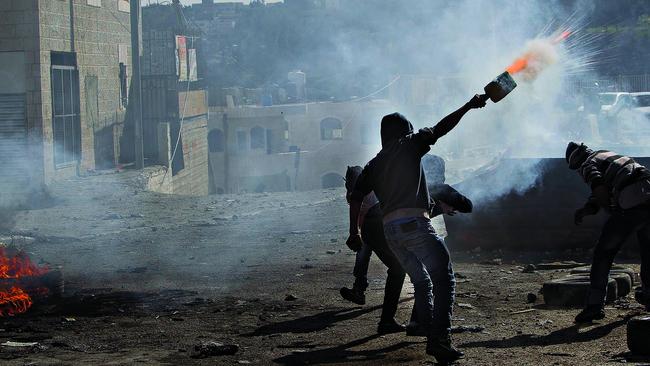
When the IDF’s spokesman wants to meet for coffee, you know something is up. Captain Arye Shalicar, who’d been my guide on “children’s day” at the West Bank military court, phoned to say the army was unhappy with my story about the visit. We agreed to meet.
So, on December 2, 2011, Sylvie and I walked into a café in Jerusalem’s German Colony neighbourhood. Over the next hour, we would take part in a very strange conversation. But it would also prove illuminating in terms of how Israel views international opinion. Shalicar pulled from his pocket the article I’d written for The Weekend Australian Magazine on November 26, 2011, with the headline Stone Cold Justice.
“We have a problem with this,” he said.
“Are there any factual mistakes in it?” I asked.
“No,” he said, “we’re not challenging the accuracy, but our concern is that it’s been published outside Israel. If this had appeared in Israel… we could live with it. This sort of thing appears quite a lot. But this appeared in Australia.”
I told him I didn’t understand his point. He explained: “People in Israel are committed to the state of Israel. Either they have moved here because they are committed to Israel or have remained here because they are. So when they read a story about Israeli soldiers and Palestinian children they read it in the context that whatever they read, it is not going to shake their commitment. But people in Australia may not have the same commitment. So when they read a story like this they may question their support for Israel. If I was sitting in Australia reading this I would think that Israeli soldiers were brutally treating Palestinian children.” He paused. I said nothing. He continued. “A story like this may damage the view Australians have of Israel and they don’t have the commitment to Israel to go along with that.”
Shalicar was articulating a view that is widespread among Israelis. To hear these words from an IDF media officer, however, was extraordinary.
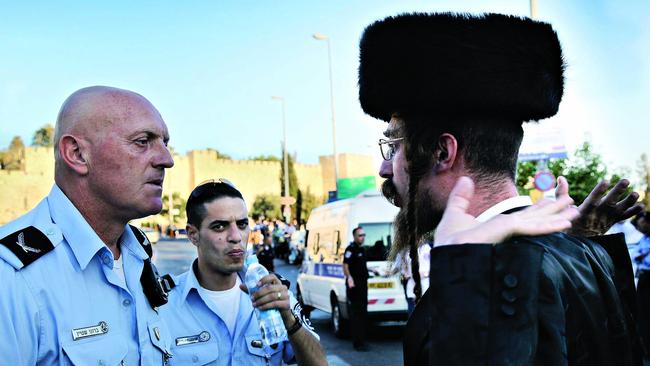
Frequently in the Israeli media I’d read stories about various abuses by the Israeli Army, but the moment I reported them in Australia I was attacked. When Jewish leaders in Australia complained, I asked them: “Are you saying Australians should not be able to read what Israelis read?” I resented the pressure not to report what I saw; I was covering the Middle East as an Australian journalist in the belief that events should be reported as you find them.
As one Australian who moved to Israel told me: “The reason some people in the Jewish community in Melbourne don’t want you writing stories about the treatment of Palestinian children is not that they think they’re untrue but because they think that by appearing outside Israel they give Israel’s enemies a weapon.”
And sure enough, while criticism from Jewish leaders in Melbourne seemed continuous, in Israeli publications the response was much more reasonable. The Times of Israel website carried a blog post (written from Australia) about me entitled An objective journalist – the unicorn of the Middle East. And in 2014, when I presented a TV report for Four Corners based on my articles in The Australian, it was attacked by hardline Israeli activists in Australia before it even went to air. Some circulated the link by which viewers could make a formal complaint to the ABC. While the program faced a fierce attack by a small group, it was well received by the Australian public. Even the Israeli government took the report in its stride.
Why do the supporters of Israel want to prevent stories like this from spreading overseas? When we arrived we did not realise the prize that many political factions in the country coveted: formalising the occupation of the West Bank into official annexation and achieving Greater Israel.
Scores of foreign journalists, diplomats and businesspeople who have lived in Israel long enough have come to this same conclusion. For the Israeli right, the prize of Greater Israel far outweighs any criticism the country receives. In order to continue pursuing its endgame of annexing the West Bank, it can’t allow the international community to form the view that the occupation is unacceptable. So reports of brutality in the West Bank are minimised so that international opinion does not turn against it.
As long as Israel insists on maintaining an occupation there will be tensions between journalists reflecting the values of their host countries and Israelis who want to maintain the occupation. The problem is that the media sometimes reports the reality: that it is relentlessly growing settlements, encouraged by financial incentives and a free security service, the IDF.
The only way for powerful groups to manage this, then, is to attack the media. As long as the media is seen as anti-Israel or anti-Semitic, the thinking goes, then Israel is not at fault.
We live at a time when more people are trying to shape reality than report it. The collapse of the traditional newspaper model means there are more people in public relations than journalism, and Israel operates one of the most effective public relations machines in the world. There’s a Hebrew word for it: hasbara, or “propaganda”. Hasbara is even the name of a government unit.
Because Israel so brilliantly manages its reality, many people – tourists, diplomats and journalists (me included) – are shocked when they come to Israel and see the occupation up close.
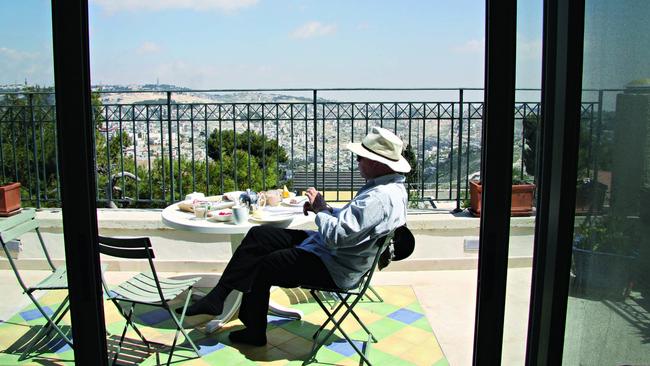
After my first bizarre meeting with Captain Arye Shalicar at the café, the Israeli Army did not give up trying to pressure me. That first meeting was friendly, but a few months later Shalicar phoned me again. “John, I want to let you know the IDF is considering banning you.”
“Banning me?” I said. “What does that mean?”
“It would mean you would not have access to the IDF,” he replied.
Over 35 years in journalism, I’d upset some powerful people, but this was the crudest attempt at intimidation I’d experienced.
“Arye, could you please let me know when you do ban me?”
Shalicar seemed surprised by my response. “Why do you want to know?” he asked.
“Because I think I can get a page-one story out of this,” I told him.
“You wouldn’t actually write about being banned, would you?” he asked.
“Of course,” I said. “When we met at that café you told me you had no problems with the facts of my reporting. My editors would not appreciate us being banned for doing nothing wrong.”
Shalicar quickly changed tack: “We’re not going to ban you, but we’ve been talking about it.”
Through my six years in the Middle East I’d come under constant pressure from Israeli lobby groups to pull my punches. I realised from many discussions with other foreign journalists that this pressure was applied in many countries.
Of the many hours of discussions I had with my colleagues in the foreign media, one comment shocked me. It was when I asked Philippe Agret, the bureau chief of Agence France Press, a question. AFP is one of the most powerful news agencies in the world. It is highly regarded as credible and independent. It is famous for resisting pressure in whichever country it operates. Agret and I were discussing how some media groups censored their reporting out of Israel in a way that they did in no other country. I asked him who he thought was self-censoring out of Israel. Without hesitation, he replied: “Everybody.”
Edited extract from Balcony Over Jerusalem, by John Lyons with Sylvie Le Clezio (HarperCollins, $34.99), out Monday.

To join the conversation, please log in. Don't have an account? Register
Join the conversation, you are commenting as Logout